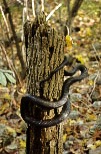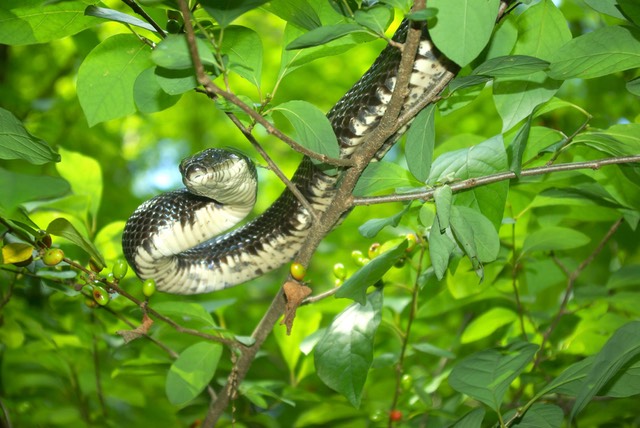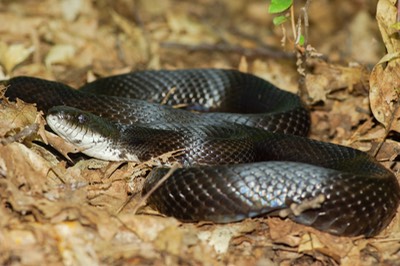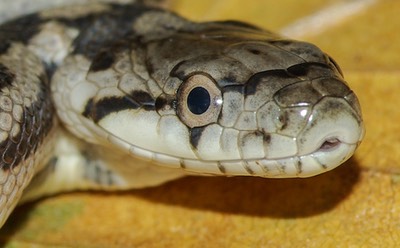Eastern Ratsnake. Female at tree shelter.
While this snake is widespread throughout most of the eastern US, it reaches the northern limit of its range here in southern New England. Found only in the Connecticut River Watershed (there is one population in Worcester County) it is truly a rare and magnificent animal. Once more common, they are increasingly uncommon and now exist in separated genetic populations.

For three years I was able to radio-track more than a dozen Ratsnakes, following them several times a week and recording their movements, behaviors, and wintering sites. It was great fun—well, not when the mosquitoes or deerflies were at their peak, or when the snakes rested where they were surrounded by luxurious growths of poison ivy. My favorite experience was finding one wrapped around a broken tree trunk (right) where it kept poking its head in and out of holes. I sat down to watch and shortly one, then two, and finally a third white-footed mouse launched themselves out from the top of the stump and bounced away into the surrounding forest.

Ratsnakes are more arboreal than any other species in Western Massachusetts. I often found them thirty feet or higher in live trees; one spent nearly a month basking on a horizontal branch and at night used a natural cavity in the Chestnut oak tree.
Data from my little project showed that males move much further than females and use much more landscape (mean:15 hectares) than females (7 hectares). The entire population of marked animals (52) used approximately 1.15 square Km (285 acres) of land.
Any and all observations of Eastern Ratsnakes should be reported to the Massachusetts Natural Heritage and Endangered Species Program (here).


